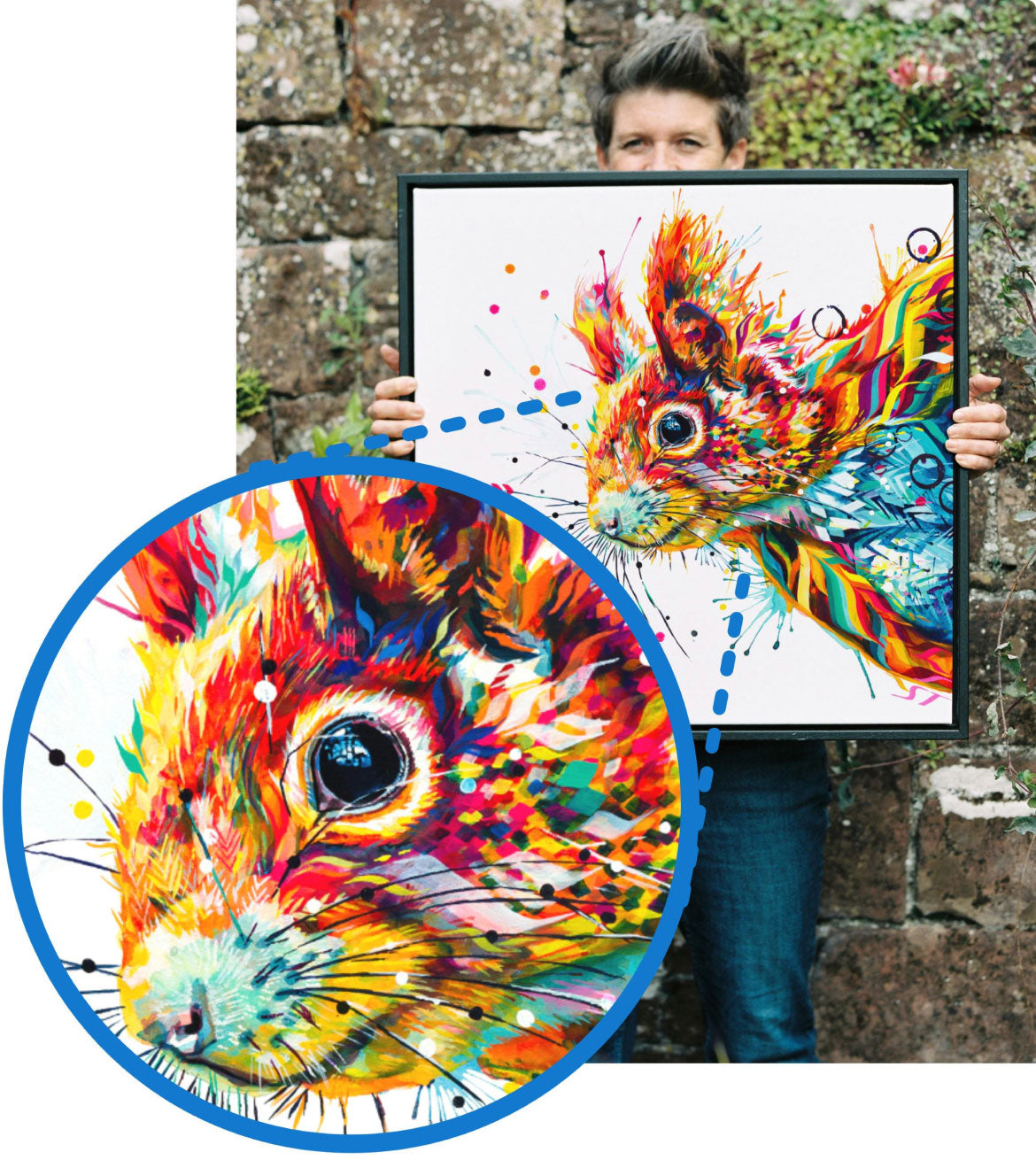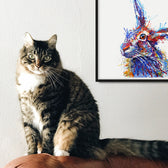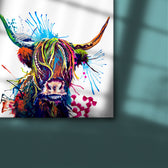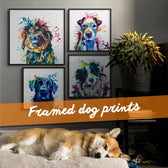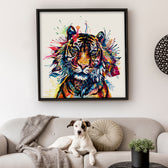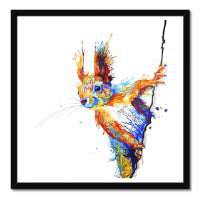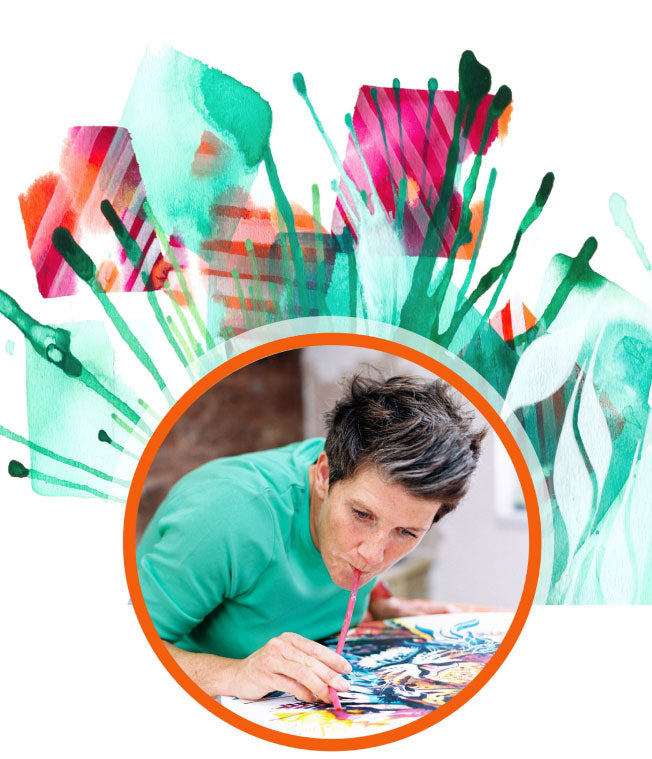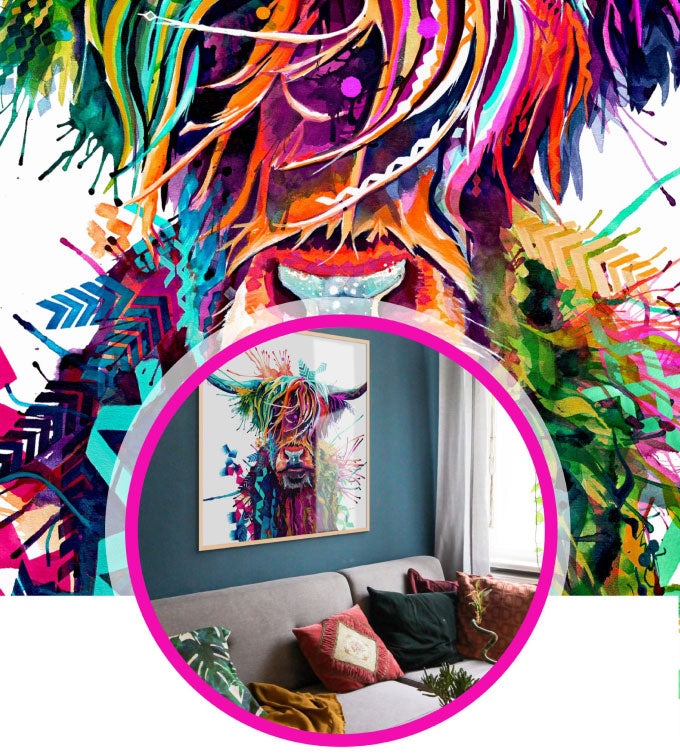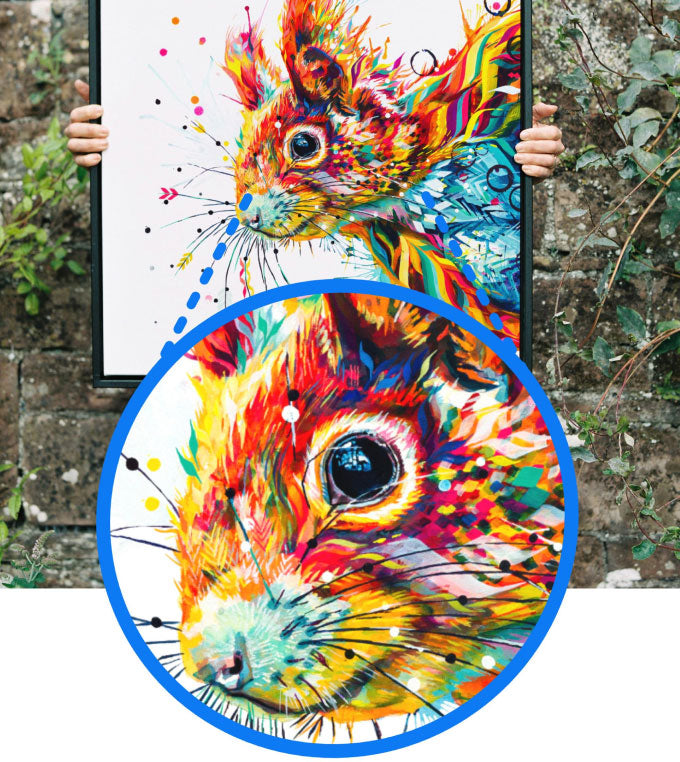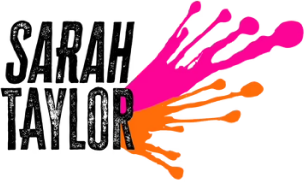Well, here we are!
You've popped by to find out more about me and my paintings,
and I'm more than likely up to my elbows in paint and ink...
So we'll start this introduction with a virtual shaking of the hand, a mug of coffee (with cream)
and a chocolate brownie that arrived through the letterbox this morning.
If you've popped by after coffee time, and its nearer gin o'clock, then I'm sure we can settle down
with the chinking of the glass, and the tinkling of the ice cubes to mark the occasion in style!

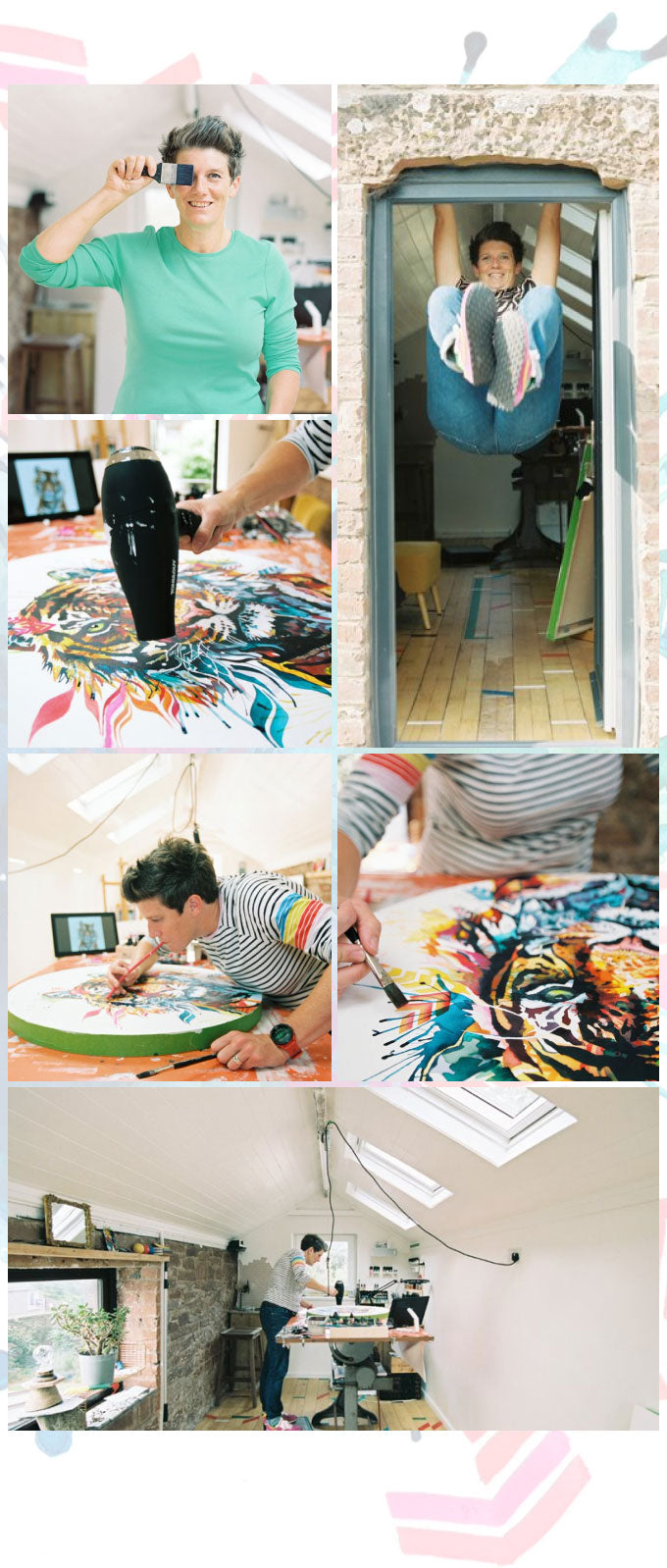
Painting is never a chore,
it is mindful, relaxing and
exciting all at the same time.
It nourishes the soul and gives me an outlet to express myself. In turn, my paintings
give my customers the opportunity to express their own style, to find a piece of
artwork that matches their personality and brings joy to their space.
This is what inspires me every day, the chance to provide the finishing touch to your room,
or to make you smile when you see your new favourite painting. Art is all about connection,
when you fall in love with a painting, it will make you happy every time you see it.
5 magic ingredients.
At first glance you may think "Sarah's just slapping colour down
there, blowing a bit, adding some great patterns et voila!"
Well kind of… I hope my paintings give a feeling of freedom, adventure, and energy.
I suppose the trick for me is making the paintings feel effortless and free-flowing whist
creating a life-like, accurate representation of my subject. If I'm painting a leopard, I'm taking
great care to show a real leopard, not a made-up leopard, or a half-arsed artwork slap-dashed
out of the studio in a matter of hours.
I take my time, I build up the layers, and make sure these animals are worth every penny.
Underneath these splashes and patterns is the framework of a real living thing.

It's all in the eyes.
I'm absolutely obsessed with painting the eyes, it is 100% my favourite part because it is where we connect.
It's all in the eyes. I'm absolutely obsessed with painting the eyes, it is 100 % my favourite part because it’s where we connect. The eyes are where we meet the soul and where I bring the subject to life. It’s where you my lovely customers, fall in love. I spend hours gazing into their eyes as I paint, perfecting their character and getting to know them.
It's certainly no hardship where I'm concerned!
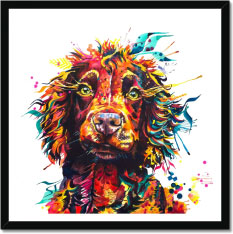
Lovely art work!
“We absolutely love it. It’s a bit funky with bright happy colours. Fills a big bit of wall in our kitchen! Fab.”
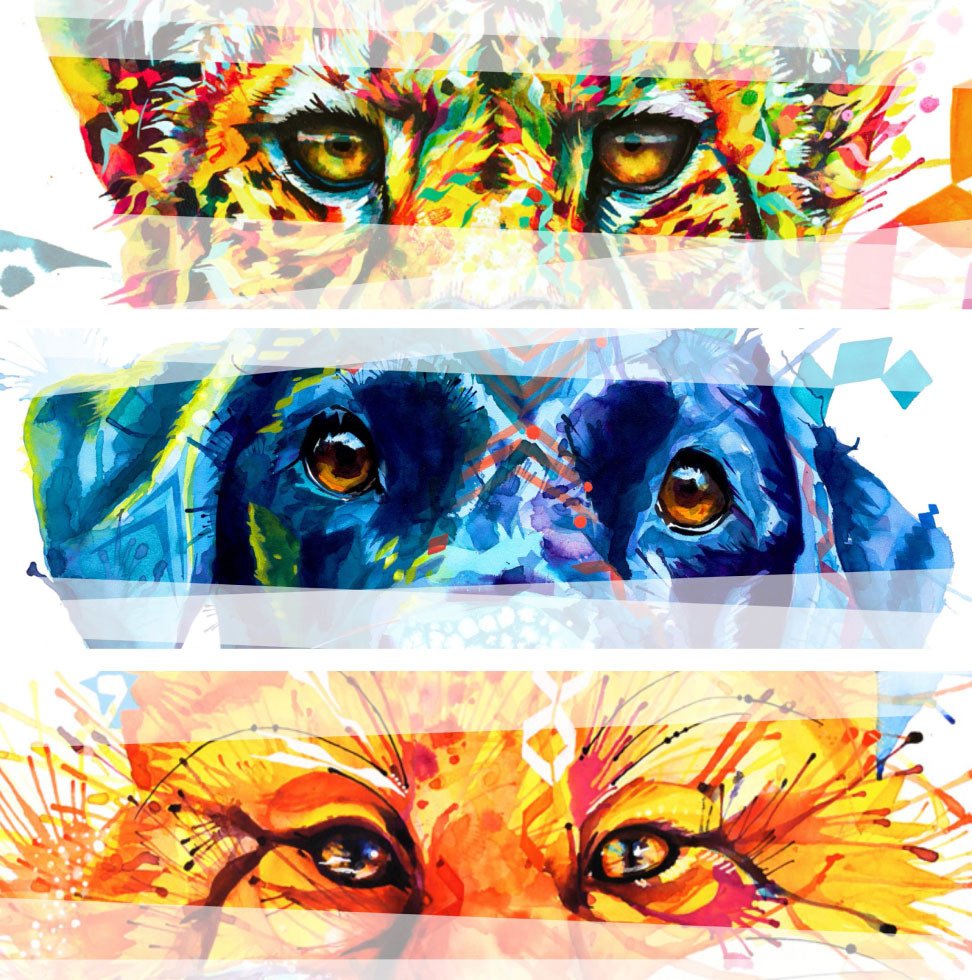
Eye-catching & Unique
The details that bring the
paintings to life!
Splash & Blow!
The splashes are my disruptors; they mix things up and can change the flow of a painting in seconds. I love letting go of control, blowing the paint and then reacting to what's happened.
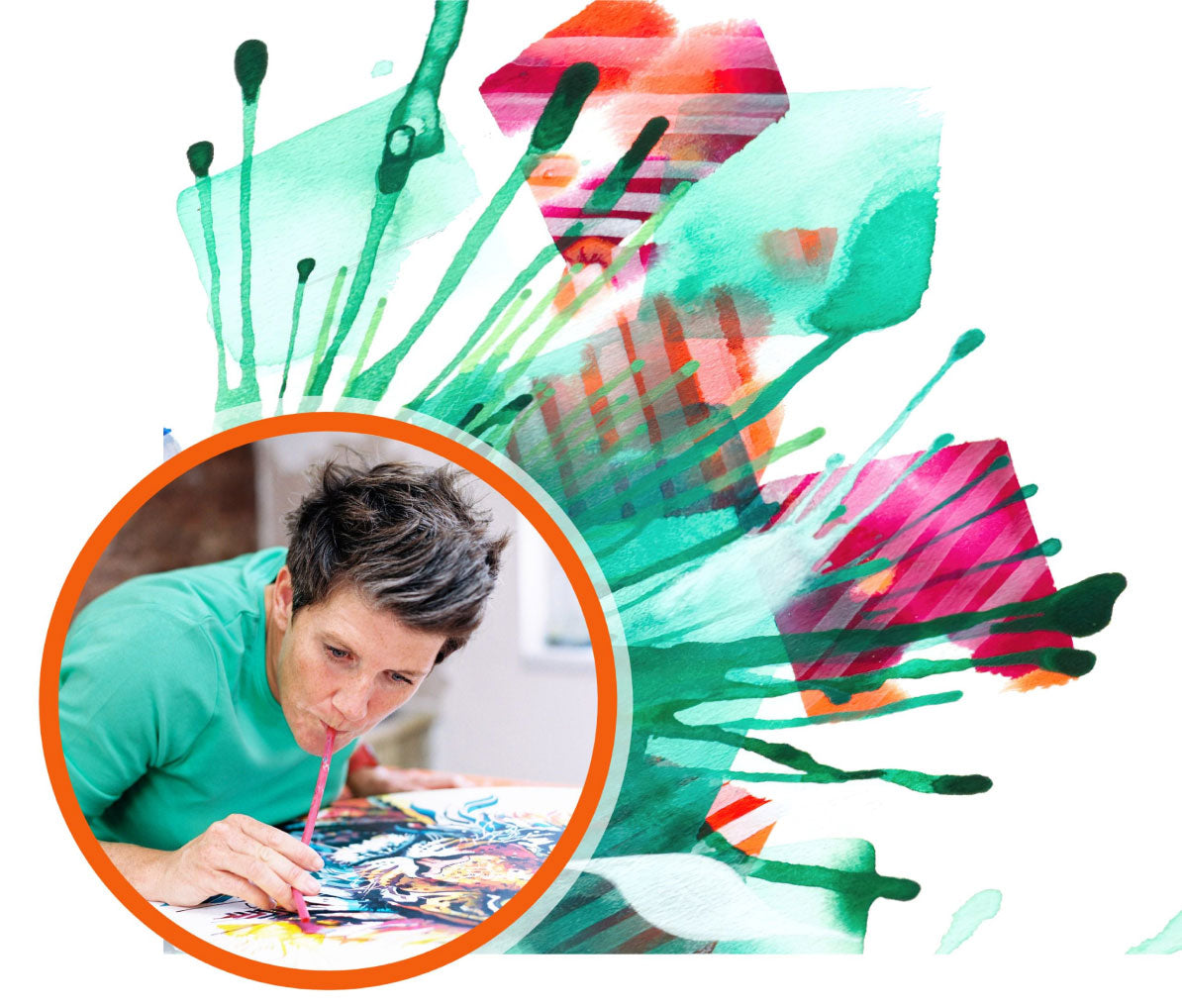
A blast of colour!
I'm sure you wouldn't be here if it wasn’t for your love of colour. I can't help playing with bright colour combinations and splashes of neon. Making adventurous colour choices and making them work is a fine balance , but a skill that makes a painting jump off the wall.
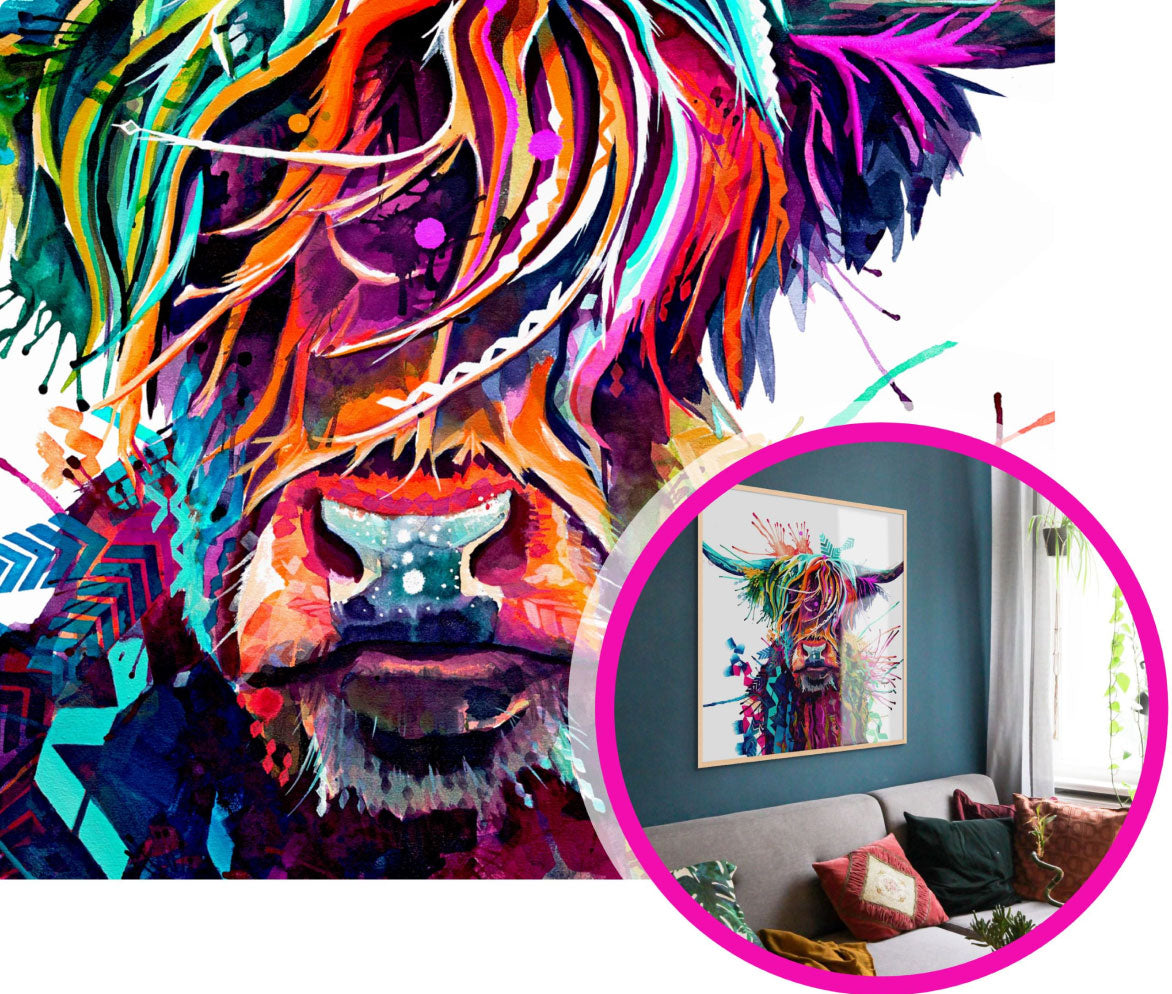
Geometric Wizardry
They are all painted by hand and evolve with the artwork. I bloody LOVE making them! It's often the last special geometric shape that brings the painting together.
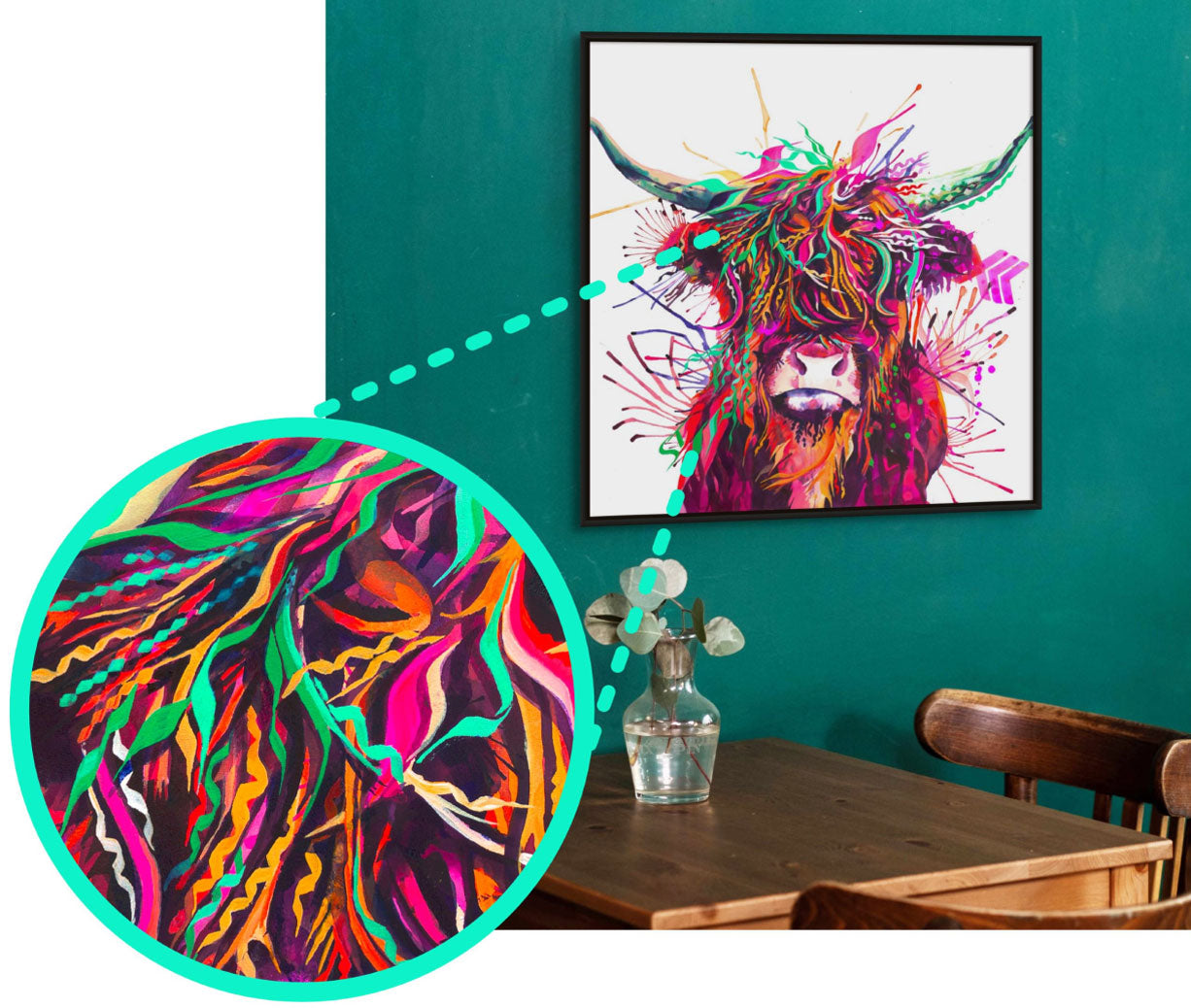
Intrinsic Energy
There’s no point in trying to copy someone else’s style, because that’s not your voice. It won’t sound like you and ultimately it won’t work. Being an artist is about finding your own style and immersing yourself in the artwork as you paint. You have to be fully in the moment to allow the energy to flow and your instincts to take over.
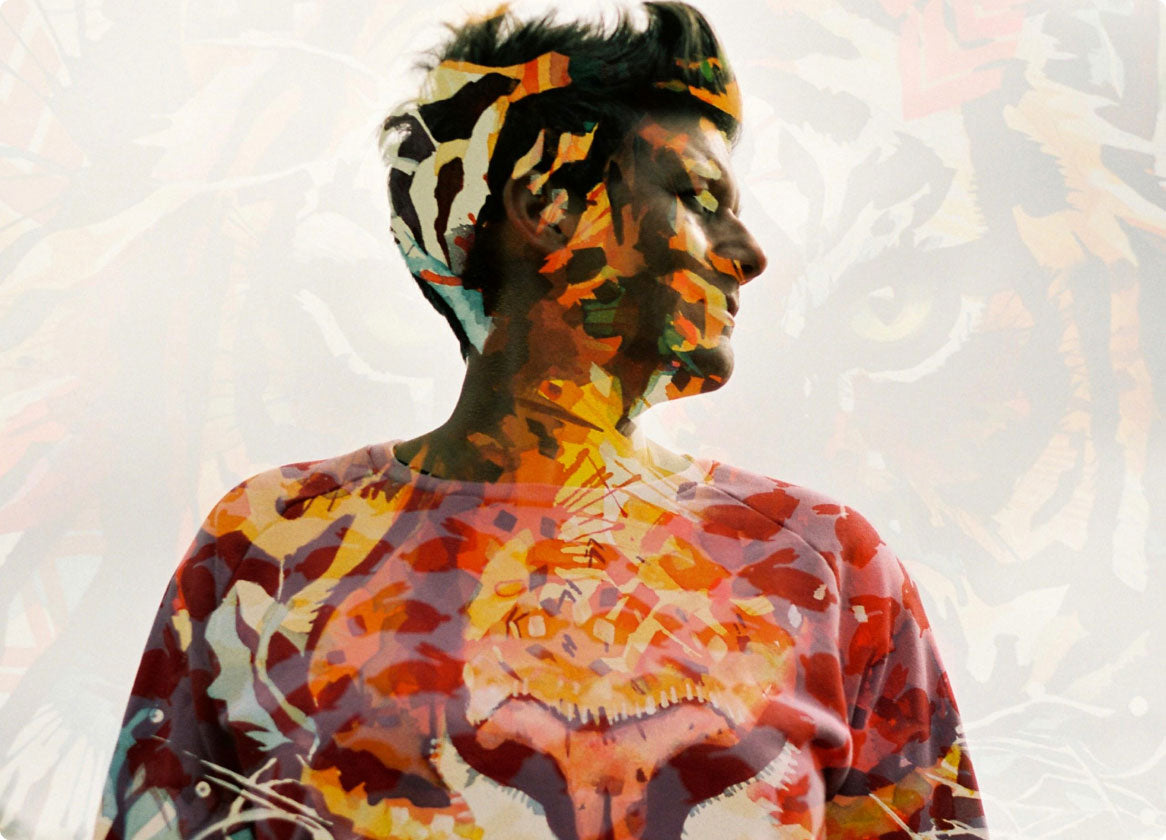
Deep Joy!
My painting comes from a desire to
experiment, a need to create.
I make art that you can go back to again and again and keep on finding
something different that you hadn’t noticed before.
I paint animals that feel like your best friend. Someone you just know,
who gets you and your unique personality. You will come into the room,
make eye contact with each other and smile.
Actually that's it right there; I make art that makes you smile.

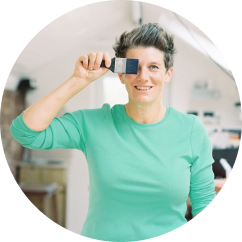

Sarah Taylor;
international
animal artist.
Colour addict // geometric wizard // paint-splash hero
Sarah has been painting animals in this style for nearly a decade, perfecting her unique painting method, a wonderous mix of hand painted geometric pattern and fluid paint splashes. She has a talent for making animals come alive, like they’re waiting to jump off the wall and have a cuddle. Easy to fall in love with them, because they feel like your best friend.
Sarah’s exuberant use of colour is a celebration of life. There are no rules, no plans, just instinct and freedom. Such a refreshing take on a much-loved subject.
Based in the Lake District, Sarah has paintings in private collections as far away as New Zealand Hong Kong and USA.

